 Electronic Arts releases the game development toolkit Adventure Construction Set for the Apple II home computer, allowing users to design their own tile-based computer RPGs, defining characters, settings, weapons, magic use, and more.
Electronic Arts releases the game development toolkit Adventure Construction Set for the Apple II home computer, allowing users to design their own tile-based computer RPGs, defining characters, settings, weapons, magic use, and more. ![]()

 Electronic Arts releases the game development toolkit Adventure Construction Set for the Apple II home computer, allowing users to design their own tile-based computer RPGs, defining characters, settings, weapons, magic use, and more.
Electronic Arts releases the game development toolkit Adventure Construction Set for the Apple II home computer, allowing users to design their own tile-based computer RPGs, defining characters, settings, weapons, magic use, and more. ![]()
 Mindscape releases RACTER for the Apple II home computer, a program originally promoted as an early example of artificial intelligence, but whose packaging claims it to be a parody of artificial intelligence.
Mindscape releases RACTER for the Apple II home computer, a program originally promoted as an early example of artificial intelligence, but whose packaging claims it to be a parody of artificial intelligence. ![]()
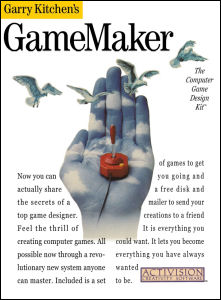 Activision releases the game development toolkit Garry Kitchen’s GameMaker for the Apple II home computer, allowing users to design their own computer games, including animated sprites, music, and more.
Activision releases the game development toolkit Garry Kitchen’s GameMaker for the Apple II home computer, allowing users to design their own computer games, including animated sprites, music, and more. ![]()
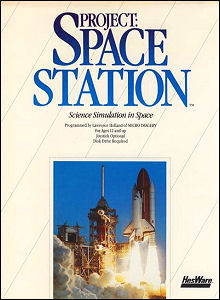 HESware releases the resource management game Project Space Station for the Apple II home computer, designed by Lawrence Holland (X-Wing vs. TIE Fighter). The game involves using a fleet of two space shuttles – Columbia and Challenger – to build the U.S. space station.
HESware releases the resource management game Project Space Station for the Apple II home computer, designed by Lawrence Holland (X-Wing vs. TIE Fighter). The game involves using a fleet of two space shuttles – Columbia and Challenger – to build the U.S. space station. ![]()
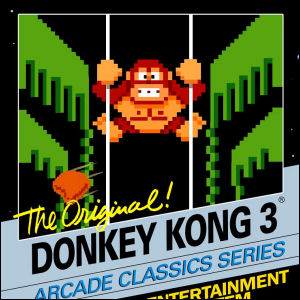 Nintendo releases the Donkey Kong 3 cartridge for the Nintendo Entertainment System, based on the company’s own 1983 arcade game.
Nintendo releases the Donkey Kong 3 cartridge for the Nintendo Entertainment System, based on the company’s own 1983 arcade game. ![]()
 Midway Games releases the arcade game Rampage in America, a game allowing up to three players to go on a guilt-free giant-monster destruction spree; numerous sequels follow on various home platforms in later years.
Midway Games releases the arcade game Rampage in America, a game allowing up to three players to go on a guilt-free giant-monster destruction spree; numerous sequels follow on various home platforms in later years.
 Polarware (formerly Penguin Software) releases a remake of the adventure game Oo-Topos for the Apple II home computer.
Polarware (formerly Penguin Software) releases a remake of the adventure game Oo-Topos for the Apple II home computer. ![]()
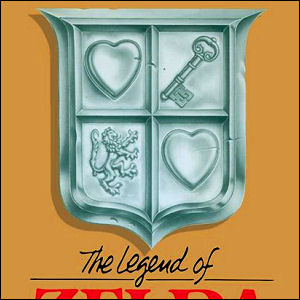 Nintendo releases The Legend Of Zelda for the Nintendo Entertainment System in North America, having already released a version early in 1986 in Japan. Rolled out with a major advertising campaign, Zelda revitalizes and redefines the video adventure game genre, as well as players’ expectation of electronically-moderated role-playing games, and spawns one of Nintendo’s most profitable major tentpole franchises.
Nintendo releases The Legend Of Zelda for the Nintendo Entertainment System in North America, having already released a version early in 1986 in Japan. Rolled out with a major advertising campaign, Zelda revitalizes and redefines the video adventure game genre, as well as players’ expectation of electronically-moderated role-playing games, and spawns one of Nintendo’s most profitable major tentpole franchises. ![]()
 Atari Games releases the arcade video game Pac-Mania, licensed from Namco, the Japanese developers behind Pac-Man, of which this game is an isometric 3-D remake.
Atari Games releases the arcade video game Pac-Mania, licensed from Namco, the Japanese developers behind Pac-Man, of which this game is an isometric 3-D remake. ![]()
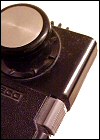 Having weathered the storm of the 1983 video game industry crash longer than most, Coleco Industries, maker of the early ’80s Colecovision video game system, files for Chapter 11 bankruptcy protection. At the time of the filing, Coleco is America’s sixth largest toy company, but the video game industry isn’t its downfall. Overproduction of the company’s Cabbage Patch Kids toys has proven to be fatal, with two straight years of annual losses exceeding $100,000,000. The remains of Coleco are eventually bought up by rival toymaker Hasbro.
Having weathered the storm of the 1983 video game industry crash longer than most, Coleco Industries, maker of the early ’80s Colecovision video game system, files for Chapter 11 bankruptcy protection. At the time of the filing, Coleco is America’s sixth largest toy company, but the video game industry isn’t its downfall. Overproduction of the company’s Cabbage Patch Kids toys has proven to be fatal, with two straight years of annual losses exceeding $100,000,000. The remains of Coleco are eventually bought up by rival toymaker Hasbro.
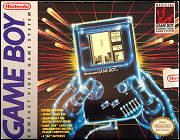 Nintendo launches a portable video game system with interchangeably cartrdiges, the Game Boy, in North America. Though many industry insiders predict a short life for the handheld game thanks to its ability to quickly drain its batteries and its black & white LCD display, the game included with each Game Boy – the incredibly popular puzzle game Tetris – becomes a selling point in itself. With a price tag of around $100, the entire million-unit allotment of Game Boys shipped to American stores sells out in under two months.
Nintendo launches a portable video game system with interchangeably cartrdiges, the Game Boy, in North America. Though many industry insiders predict a short life for the handheld game thanks to its ability to quickly drain its batteries and its black & white LCD display, the game included with each Game Boy – the incredibly popular puzzle game Tetris – becomes a selling point in itself. With a price tag of around $100, the entire million-unit allotment of Game Boys shipped to American stores sells out in under two months.
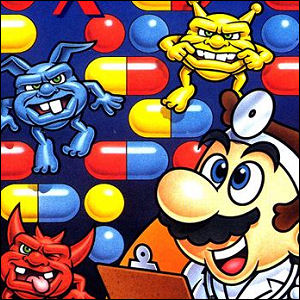 Nintendo releases the Dr. Mario cartridge for the Nintendo Entertainment System, giving everyone’s favorite Mushroom Kingdom plumper a medical degree and pitting him against viruses and germs, Tetris-style.
Nintendo releases the Dr. Mario cartridge for the Nintendo Entertainment System, giving everyone’s favorite Mushroom Kingdom plumper a medical degree and pitting him against viruses and germs, Tetris-style. ![]()
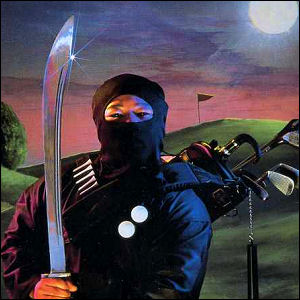 One of Atari’s most innovative games of the 1990s is released for the Atari 7800 home video game system. Ninja Golf is a game parodying both the glut of current sports simulations and martial arts fighting games – at the same time. Players take a swing at the ball, and then a swing at their throwing-star-hurling enemies. Despite its cheeky humor and innovative play, Ninja Golf doesn’t make much noise at retail – it’s stealthy, like a ninja.
One of Atari’s most innovative games of the 1990s is released for the Atari 7800 home video game system. Ninja Golf is a game parodying both the glut of current sports simulations and martial arts fighting games – at the same time. Players take a swing at the ball, and then a swing at their throwing-star-hurling enemies. Despite its cheeky humor and innovative play, Ninja Golf doesn’t make much noise at retail – it’s stealthy, like a ninja. ![]()
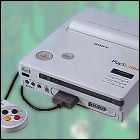 After three years of joint development on a CD-ROM peripheral for Nintendo’s new video game system, Sony and Nintendo part ways, leaving the public and the press confused over what will happen next. Hours after Nintendo unveils the specs and price point for its Super Nintendo Entertainment System to the press, Sony announces that it will release a new system called the Play Station in 1992, which will play both SNES cartridges and disc-based systems made by Sony. Of course, Sony’s development curve isn’t that simple, and the first Sony video game system won’t arrive until a few years – and a whole generation of computer game hardware – later.
After three years of joint development on a CD-ROM peripheral for Nintendo’s new video game system, Sony and Nintendo part ways, leaving the public and the press confused over what will happen next. Hours after Nintendo unveils the specs and price point for its Super Nintendo Entertainment System to the press, Sony announces that it will release a new system called the Play Station in 1992, which will play both SNES cartridges and disc-based systems made by Sony. Of course, Sony’s development curve isn’t that simple, and the first Sony video game system won’t arrive until a few years – and a whole generation of computer game hardware – later.
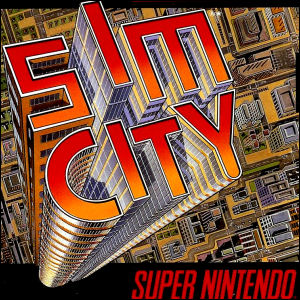 Nintendo releases the city-building game SimCity for the Super NES, a game developed with MAxis.
Nintendo releases the city-building game SimCity for the Super NES, a game developed with MAxis. ![]()
![]() Alternative Software releases the side-scrolling shoot-’em-up game Dalek Attack for PC-compatible computers, a game set in the universe of Doctor Who.
Alternative Software releases the side-scrolling shoot-’em-up game Dalek Attack for PC-compatible computers, a game set in the universe of Doctor Who. ![]()
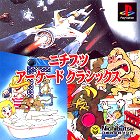 Nichibutsu releases the arcade compilation Nichibutsu Arcade Classics for the Sony Playstation in Japan only, containing both the original and enhanced versions of the ’80s coin-op arcade games Crazy Climber, Frisky Tom, and Moon Cresta.
Nichibutsu releases the arcade compilation Nichibutsu Arcade Classics for the Sony Playstation in Japan only, containing both the original and enhanced versions of the ’80s coin-op arcade games Crazy Climber, Frisky Tom, and Moon Cresta. ![]()
 Namco releases the arcade compilation Namco Museum Volume 2 for the Sony Playstation, including the ’80s arcade hits Gaplus, Mappy, and Xevious. (This is the Japanese release; the same title will be released in North America later in the year, with a slightly different lineup of games.)
Namco releases the arcade compilation Namco Museum Volume 2 for the Sony Playstation, including the ’80s arcade hits Gaplus, Mappy, and Xevious. (This is the Japanese release; the same title will be released in North America later in the year, with a slightly different lineup of games.) ![]()
 Nichibutsu releases the retro revival game Hyper Crazy Climber for the Sony Playstation, featuring both the original arcade version of Crazy Climber and a newer update with adventure game elements and power-ups. This game is limited only to the Japanese market.
Nichibutsu releases the retro revival game Hyper Crazy Climber for the Sony Playstation, featuring both the original arcade version of Crazy Climber and a newer update with adventure game elements and power-ups. This game is limited only to the Japanese market. ![]()
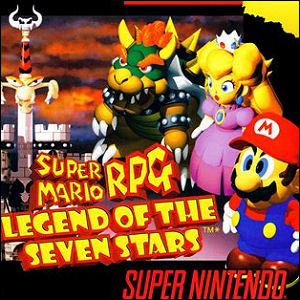 Nintendo releases the role-playing game Super Mario RPG for the Super NES, a game developed with Square. With a bare minimum of references to the rest of the Super Mario franchise, this is the first attempt to move Mario into RPG territory.
Nintendo releases the role-playing game Super Mario RPG for the Super NES, a game developed with Square. With a bare minimum of references to the rest of the Super Mario franchise, this is the first attempt to move Mario into RPG territory. ![]()
 IREM, under its I’MAX imprint, releases the arcade compilation IREM Arcade Classics for the Sony Playstation in Japan only, containing the ’80s coin-op arcade games Motorace USA, Spartan-X, and the football game 10-Yard Fight.
IREM, under its I’MAX imprint, releases the arcade compilation IREM Arcade Classics for the Sony Playstation in Japan only, containing the ’80s coin-op arcade games Motorace USA, Spartan-X, and the football game 10-Yard Fight. ![]()
 Namco releases the arcade compilation Namco Museum Volume 1 for the Sony Playstation, including the ’80s arcade hits Pac-Man, Galaga, Pole Position, and Bosconian. (The same title was released to the Japanese market in 1995.)
Namco releases the arcade compilation Namco Museum Volume 1 for the Sony Playstation, including the ’80s arcade hits Pac-Man, Galaga, Pole Position, and Bosconian. (The same title was released to the Japanese market in 1995.) ![]()
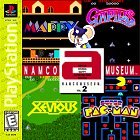 Namco releases the arcade compilation Namco Museum Volume 2 for the Sony Playstation, including the ’80s arcade hits Super Pac-Man, Gaplus, Mappy, and Xevious. (The same title was released to the Japanese market earlier in the year, with a slightly different lineup of games.)
Namco releases the arcade compilation Namco Museum Volume 2 for the Sony Playstation, including the ’80s arcade hits Super Pac-Man, Gaplus, Mappy, and Xevious. (The same title was released to the Japanese market earlier in the year, with a slightly different lineup of games.) ![]()
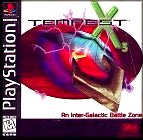 Interplay releases the arcade remake Tempest X3 for the Sony Playstation, featuring Atari’s original arcade version of Tempest and colorfully updated modern versions.
Interplay releases the arcade remake Tempest X3 for the Sony Playstation, featuring Atari’s original arcade version of Tempest and colorfully updated modern versions. ![]()
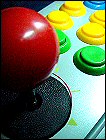 Programmer Nicola Salmoria releases the earliest version of the Multiple Arcade Machine Emulator, or MAME, a freeware PC program which allows users to obtain dumps of the original 1970s and 1980s arcade game ROM chips which MAME interprets, emulating the original hardware architecture to allow play of those games with remarkable fidelity to the original graphics and sounds. This kick-starts a golden age of computer emulation of classic video games and game systems, with the average desktop computer now sporting enough memory to allow for accurate emulation. The release of MAME also ignites an ongoing controversy about the legality of downloading games whose original manufacturers are no longer exploting their intellectual property (or, in some cases, no longer exist as corporate entities).
Programmer Nicola Salmoria releases the earliest version of the Multiple Arcade Machine Emulator, or MAME, a freeware PC program which allows users to obtain dumps of the original 1970s and 1980s arcade game ROM chips which MAME interprets, emulating the original hardware architecture to allow play of those games with remarkable fidelity to the original graphics and sounds. This kick-starts a golden age of computer emulation of classic video games and game systems, with the average desktop computer now sporting enough memory to allow for accurate emulation. The release of MAME also ignites an ongoing controversy about the legality of downloading games whose original manufacturers are no longer exploting their intellectual property (or, in some cases, no longer exist as corporate entities).
 Namco releases the arcade compilation Namco Museum Volume 3 for the Sony Playstation, including the ’80s arcade hits Ms. Pac-Man, Galaxian, Dig Dug, and Pole Position II. (The same title was released to the Japanese market the previous year, with the same lineup of games.)
Namco releases the arcade compilation Namco Museum Volume 3 for the Sony Playstation, including the ’80s arcade hits Ms. Pac-Man, Galaxian, Dig Dug, and Pole Position II. (The same title was released to the Japanese market the previous year, with the same lineup of games.) ![]()
 Little & Brown publishes J.C. Herz’s non-fictional analysis of the video game industry, “Joystick Nation“. The books is a series of essays on the origins, appeal, marketing and interpretation of video games, often from an academic and sociological perspective. A TV documentary project based on the book is announced at a later date, but never enters production.
Little & Brown publishes J.C. Herz’s non-fictional analysis of the video game industry, “Joystick Nation“. The books is a series of essays on the origins, appeal, marketing and interpretation of video games, often from an academic and sociological perspective. A TV documentary project based on the book is announced at a later date, but never enters production. ![]()
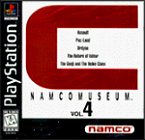 Namco releases the arcade compilation Namco Museum Volume 4 for the Sony Playstation, including the ’80s arcade games Pac-Land, Ordyne, and others. (The same title was released to the Japanese market the previous year, with the same lineup of games.)
Namco releases the arcade compilation Namco Museum Volume 4 for the Sony Playstation, including the ’80s arcade games Pac-Land, Ordyne, and others. (The same title was released to the Japanese market the previous year, with the same lineup of games.) ![]()
 Namco releases the arcade compilation Namco Museum Encore in Japan for the Sony Playstation, including the ’80s arcade games Motos, King & Balloon, and others. (This volume is not released in North America.)
Namco releases the arcade compilation Namco Museum Encore in Japan for the Sony Playstation, including the ’80s arcade games Motos, King & Balloon, and others. (This volume is not released in North America.) ![]()
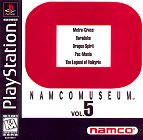 Namco releases the arcade compilation Namco Museum Volume 5 for the Sony Playstation, including the ’80s arcade games Pac-Mania, Baraduke, and others. (The same title was released to the Japanese market earlier in the year, with the same lineup of games.)
Namco releases the arcade compilation Namco Museum Volume 5 for the Sony Playstation, including the ’80s arcade games Pac-Mania, Baraduke, and others. (The same title was released to the Japanese market earlier in the year, with the same lineup of games.) ![]()